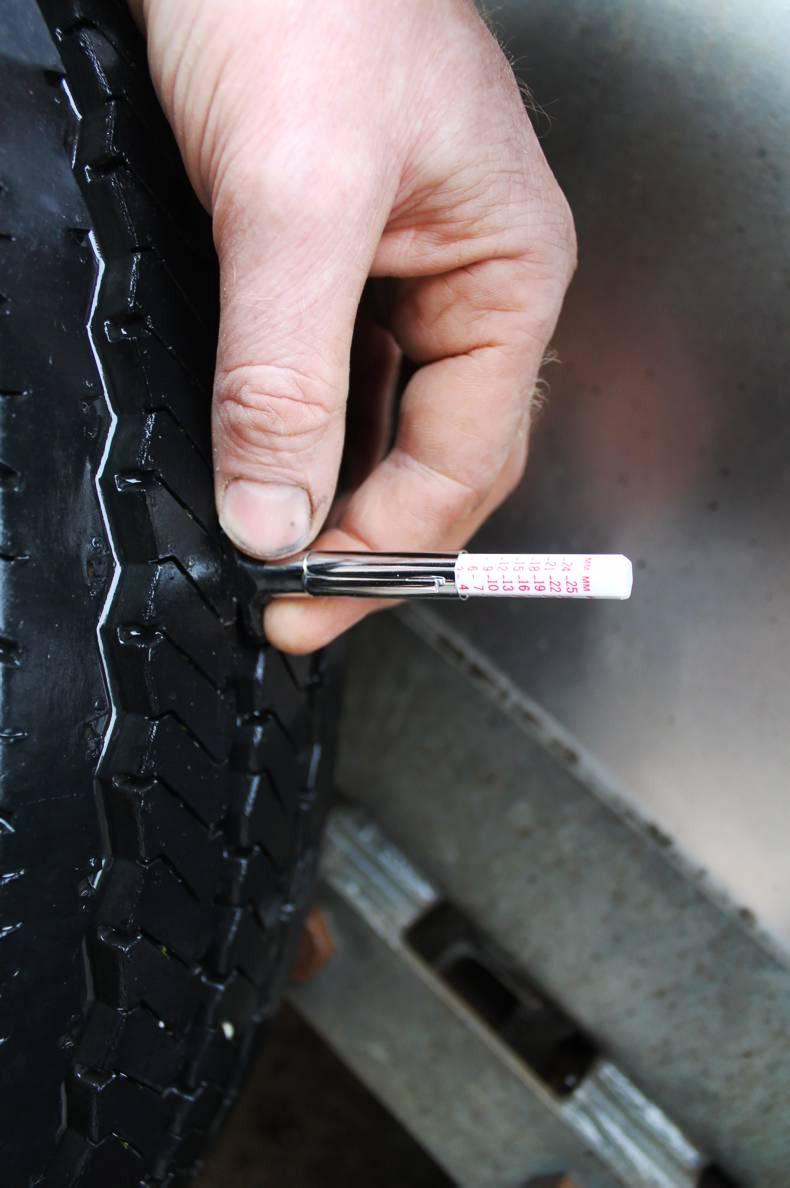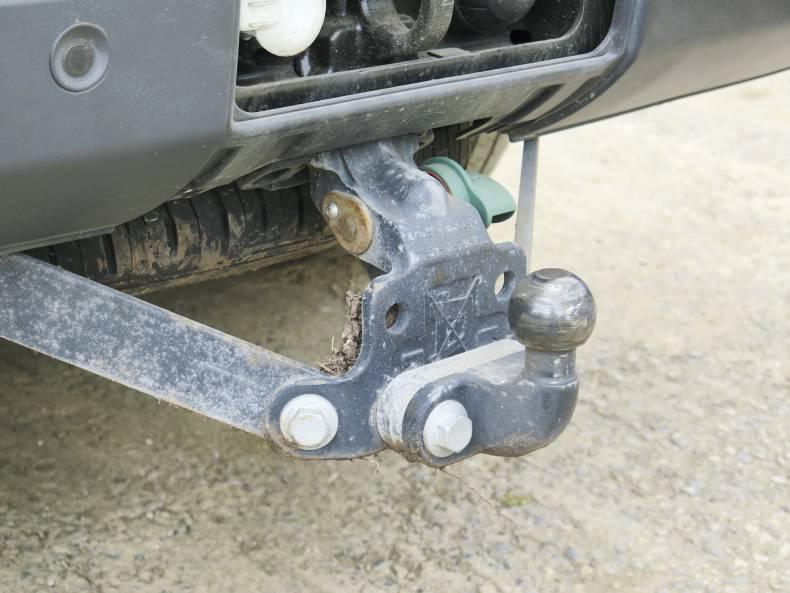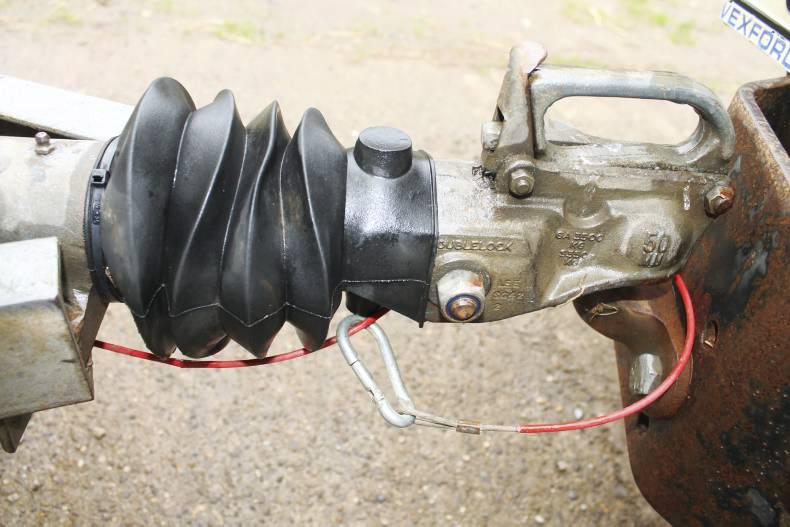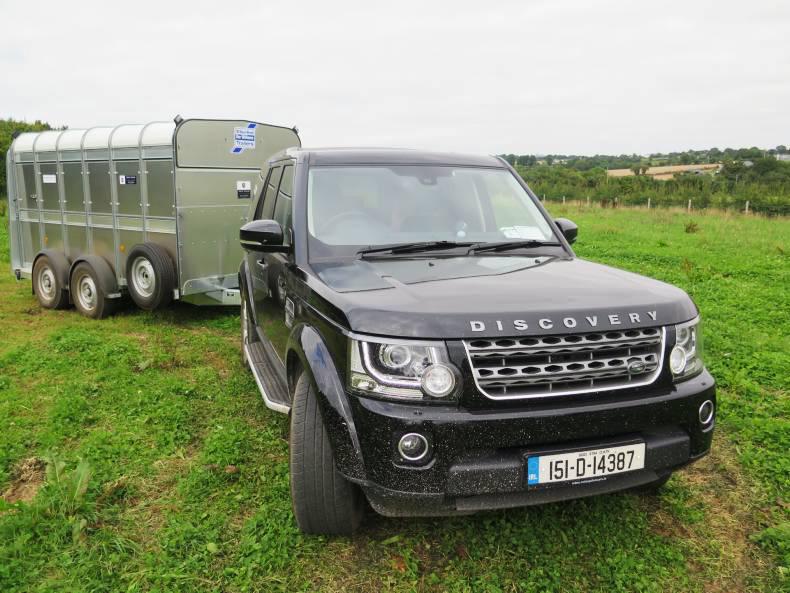Most Irish farmers’ cars, vans and 4x4s are fitted with a towbar. Towing trailers is part of everyday farming life, especially on a livestock farm.
At some stage during the year, some people may have experienced a near miss either loading animals or bulky goods. This might not have happened with a little maintenance and time to ensure that the towing vehicle and trailer are in good shape before taking to the road with a load.
The responsibility is always with the driver to ensure that both the towing vehicle and trailer are safe and mechanically sound. The vehicle and trailer must comply with all relevant road traffic legislation for the safety of the driver and other road users, and to avoid an expensive fine. This article will help drivers to recognise some of the checks and points to consider when using a trailer on the road.
Vehicle handling
When the trailer is attached, the vehicle’s driving characteristics will change immediately. The extra weight behind the vehicle will increase the braking distance, and also affect the cornering ability in bends.
It is always important to make sure that you are driving the trailer and not the trailer driving your vehicle. The latter nearly always happens when the trailer is overloaded, or the driving speed is too high. It is an uneasy feeling to look in the mirror at a trailer fish-tailing behind you. In this scenario, reducing speed gradually with no dramatic movements on the steering should allow you to come out of trouble. The trick is not to end up there in the first place.
New technology
Some modern cars and 4x4s are fitted with hill start assist systems, which are helpful. The system gives you about 30 seconds to move off without slipping back downhill.
Many modern vehicles are fitted with trailer stability systems when a factory approved towbar is fitted. The extra cost of this system is included in many cases with the cost of the towbar. This is a useful safety feature, in that it controls the car independently of the driver in the event of the trailer starting to weave.
It automatically controls the ABS braking and traction control systems to reduce the vehicle’s speed and bring any trailer weaving movement to a stop. It does not mean that this will improve poor driving.
Some modern cars are now being fitted with automatic trailer reversing and parking systems. These are on more expensive models as yet and it will be some time before they are widely available.
Hitching up the trailer
Check that the tow bar is in good condition and secure.Examine the trailer hitch, paying attention to the safety clasp. Check that clasp is locked in so that the trailer and vehicle don’t part company.Check the breakaway brake is working properly, and that the safety chain is correctly attached. The brakeaway device will not engage if it is not pulled. Check that the lighting cable is free from cuts and the vehicle and trailer’s seven-pin plug is wired correctly. The danger here is that the left indicator may come on when the right indicator is needed, or no brake lights warning traffic of a slowing vehicle. Check all lights and reflectors before use.The handbrake if one is fitted is critical when hitching and parking the trailer. A trailer rolling away down the yard can lead to trouble.The wheels go around and around
Make sure all wheel rims are in good condition and that the wheel nuts are correctly tightened. Especially if a wheel has been changed recently.Check that all tyres are free from cuts, bulges and have adequate tread – the legal requirement is a minimum of 1.6mm.Check that the tyre pressure is correct. Uneven tyre pressure can lead to swaying of the trailer in use. It also increases the risk of a tyre blowout by riming the tyre. The tyres should be of the right ply and size to carry the weight recommended.What to have in the boot
In the event of a breakdown, wheel chocks, torches and emergency warning triangles are useful. A working jack and tools to remove wheels, also some spare bulbs and fuses are no harm to have. A wheelmate changing system is a great piece of kit to have for a four wheeled trailer. It allows the driver to raise the wheel to be changed with no jack. The good wheel can drive up the ramp and into the semi oval slot allowing the damaged tyre to be changed.
On the road
There are some very important safety tips that you need to keep in mind when towing a trailer.
You need to anticipate hazards earlier than normal.Remember that if you are drawing a trailer, you are not entitled to drive in the outside lane of a motorway.The maximum legal speed limit for a vehicle drawing a trailer is 80km/h or less in the case where the overall speed limit is less.
Drive smoother and more gently than normal and avoid any unnecessary sudden braking or steering.What is a jackknife?
Knowing how it happens can help us avoid it. This situation normally happens when the towing vehicle wheels brake hard, and the trailer cannot respond, losing traction and rolling forward, pushing out the trailer to one side. This may cause overturning of the vehicle and trailer.
Animals in the trailer
Unrestrained animals, especially large animals, moving around can cause the stability of the load to change. This may not happen when the trailer is fully loaded, only when one or two large animals are left.
If using a trailer with twin decks for sheep, avoid travelling with the top deck loaded and the bottom deck empty, as it will affect the centre of gravity of the trailer.
Most Irish farmers’ cars, vans and 4x4s are fitted with a towbar. Towing trailers is part of everyday farming life, especially on a livestock farm.
At some stage during the year, some people may have experienced a near miss either loading animals or bulky goods. This might not have happened with a little maintenance and time to ensure that the towing vehicle and trailer are in good shape before taking to the road with a load.
The responsibility is always with the driver to ensure that both the towing vehicle and trailer are safe and mechanically sound. The vehicle and trailer must comply with all relevant road traffic legislation for the safety of the driver and other road users, and to avoid an expensive fine. This article will help drivers to recognise some of the checks and points to consider when using a trailer on the road.
Vehicle handling
When the trailer is attached, the vehicle’s driving characteristics will change immediately. The extra weight behind the vehicle will increase the braking distance, and also affect the cornering ability in bends.
It is always important to make sure that you are driving the trailer and not the trailer driving your vehicle. The latter nearly always happens when the trailer is overloaded, or the driving speed is too high. It is an uneasy feeling to look in the mirror at a trailer fish-tailing behind you. In this scenario, reducing speed gradually with no dramatic movements on the steering should allow you to come out of trouble. The trick is not to end up there in the first place.
New technology
Some modern cars and 4x4s are fitted with hill start assist systems, which are helpful. The system gives you about 30 seconds to move off without slipping back downhill.
Many modern vehicles are fitted with trailer stability systems when a factory approved towbar is fitted. The extra cost of this system is included in many cases with the cost of the towbar. This is a useful safety feature, in that it controls the car independently of the driver in the event of the trailer starting to weave.
It automatically controls the ABS braking and traction control systems to reduce the vehicle’s speed and bring any trailer weaving movement to a stop. It does not mean that this will improve poor driving.
Some modern cars are now being fitted with automatic trailer reversing and parking systems. These are on more expensive models as yet and it will be some time before they are widely available.
Hitching up the trailer
Check that the tow bar is in good condition and secure.Examine the trailer hitch, paying attention to the safety clasp. Check that clasp is locked in so that the trailer and vehicle don’t part company.Check the breakaway brake is working properly, and that the safety chain is correctly attached. The brakeaway device will not engage if it is not pulled. Check that the lighting cable is free from cuts and the vehicle and trailer’s seven-pin plug is wired correctly. The danger here is that the left indicator may come on when the right indicator is needed, or no brake lights warning traffic of a slowing vehicle. Check all lights and reflectors before use.The handbrake if one is fitted is critical when hitching and parking the trailer. A trailer rolling away down the yard can lead to trouble.The wheels go around and around
Make sure all wheel rims are in good condition and that the wheel nuts are correctly tightened. Especially if a wheel has been changed recently.Check that all tyres are free from cuts, bulges and have adequate tread – the legal requirement is a minimum of 1.6mm.Check that the tyre pressure is correct. Uneven tyre pressure can lead to swaying of the trailer in use. It also increases the risk of a tyre blowout by riming the tyre. The tyres should be of the right ply and size to carry the weight recommended.What to have in the boot
In the event of a breakdown, wheel chocks, torches and emergency warning triangles are useful. A working jack and tools to remove wheels, also some spare bulbs and fuses are no harm to have. A wheelmate changing system is a great piece of kit to have for a four wheeled trailer. It allows the driver to raise the wheel to be changed with no jack. The good wheel can drive up the ramp and into the semi oval slot allowing the damaged tyre to be changed.
On the road
There are some very important safety tips that you need to keep in mind when towing a trailer.
You need to anticipate hazards earlier than normal.Remember that if you are drawing a trailer, you are not entitled to drive in the outside lane of a motorway.The maximum legal speed limit for a vehicle drawing a trailer is 80km/h or less in the case where the overall speed limit is less.
Drive smoother and more gently than normal and avoid any unnecessary sudden braking or steering.What is a jackknife?
Knowing how it happens can help us avoid it. This situation normally happens when the towing vehicle wheels brake hard, and the trailer cannot respond, losing traction and rolling forward, pushing out the trailer to one side. This may cause overturning of the vehicle and trailer.
Animals in the trailer
Unrestrained animals, especially large animals, moving around can cause the stability of the load to change. This may not happen when the trailer is fully loaded, only when one or two large animals are left.
If using a trailer with twin decks for sheep, avoid travelling with the top deck loaded and the bottom deck empty, as it will affect the centre of gravity of the trailer.











SHARING OPTIONS